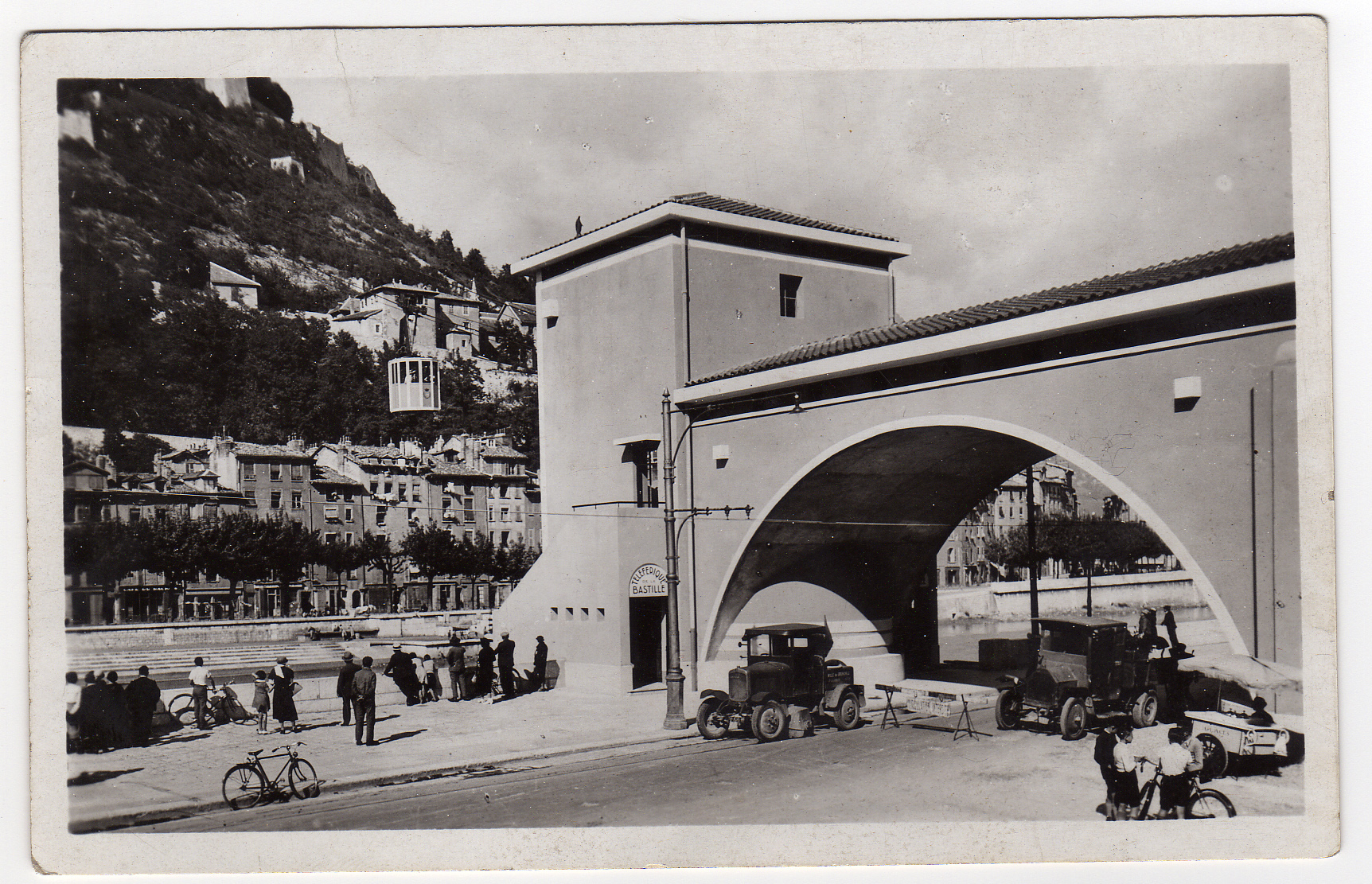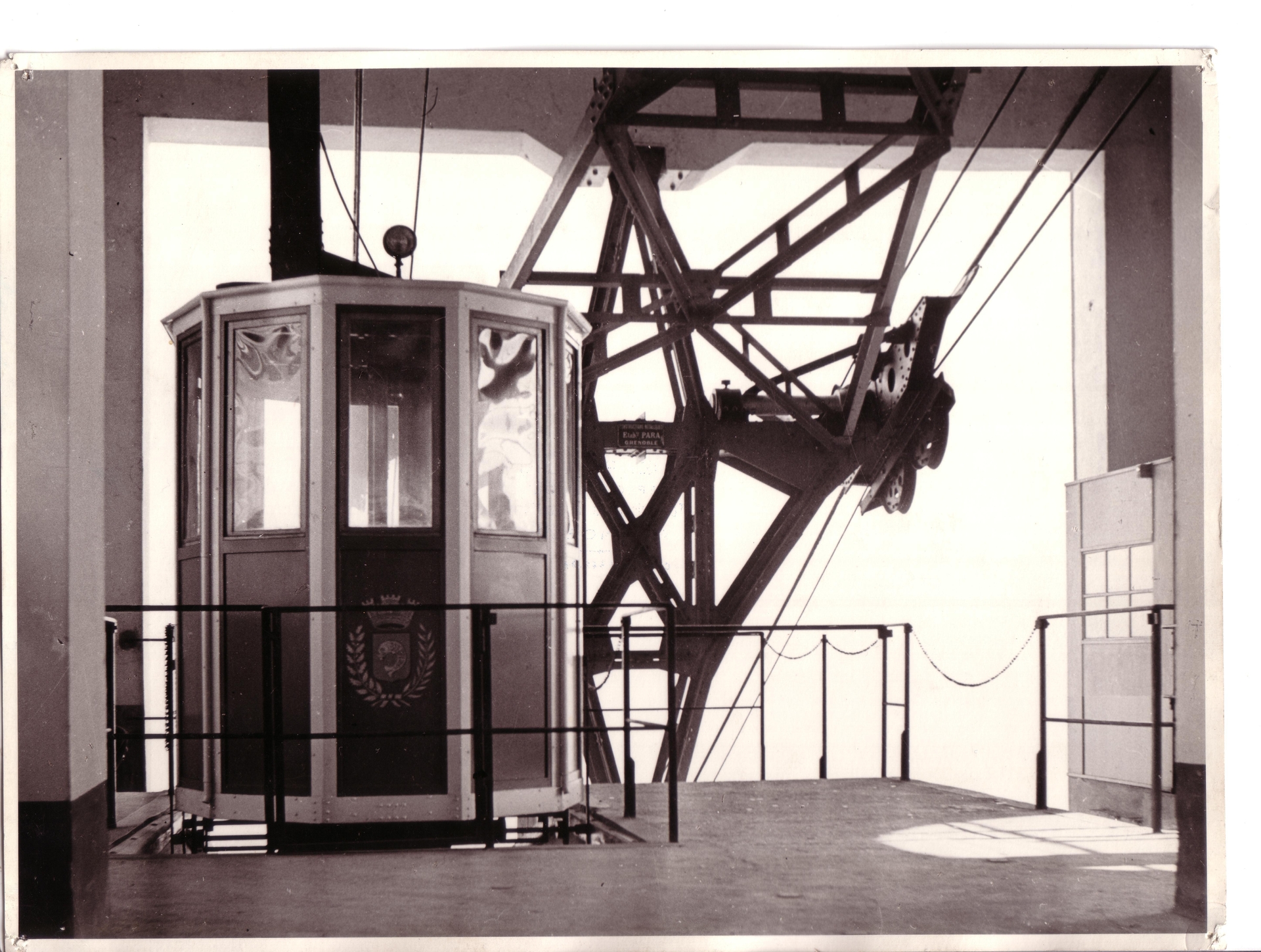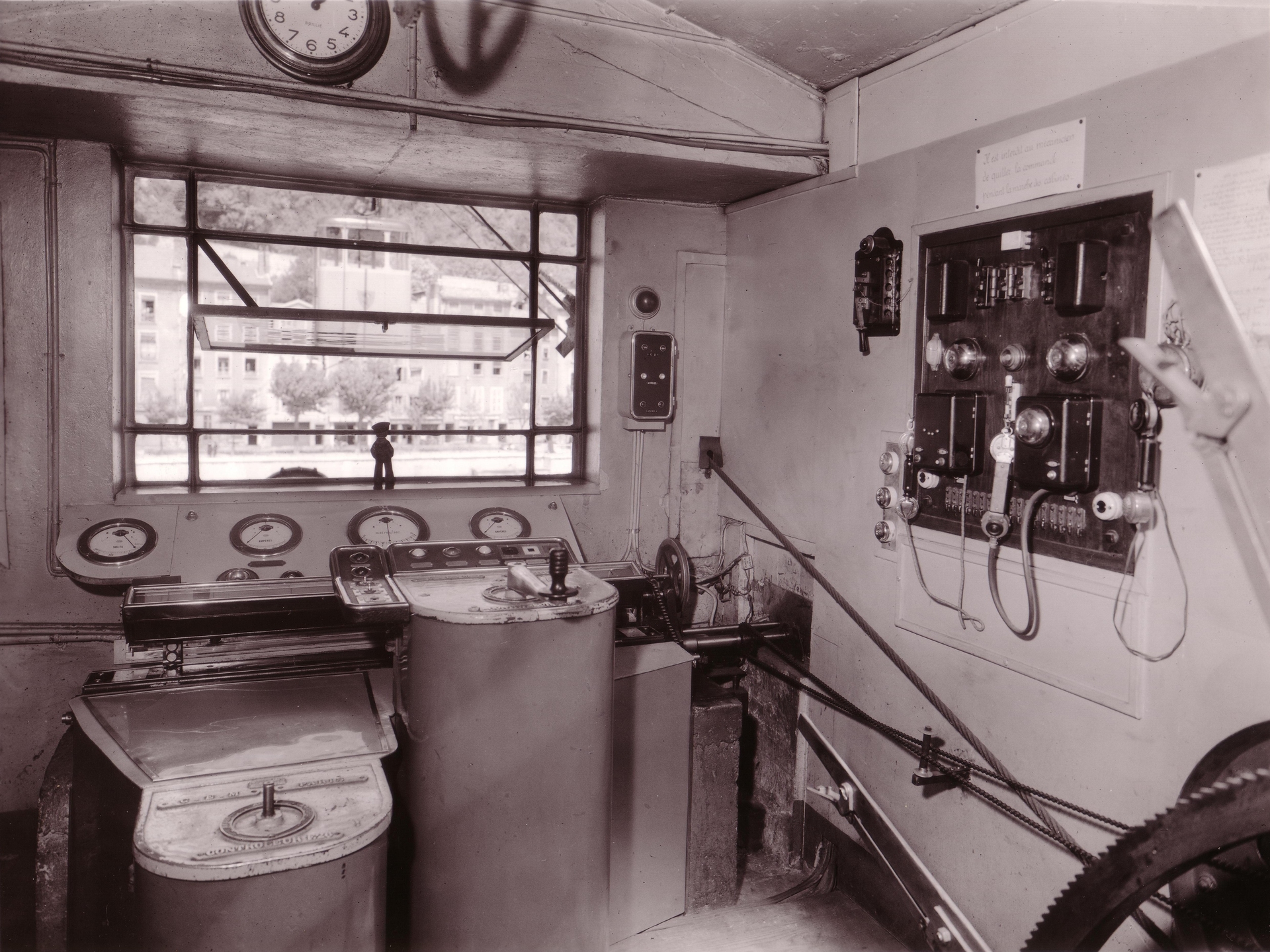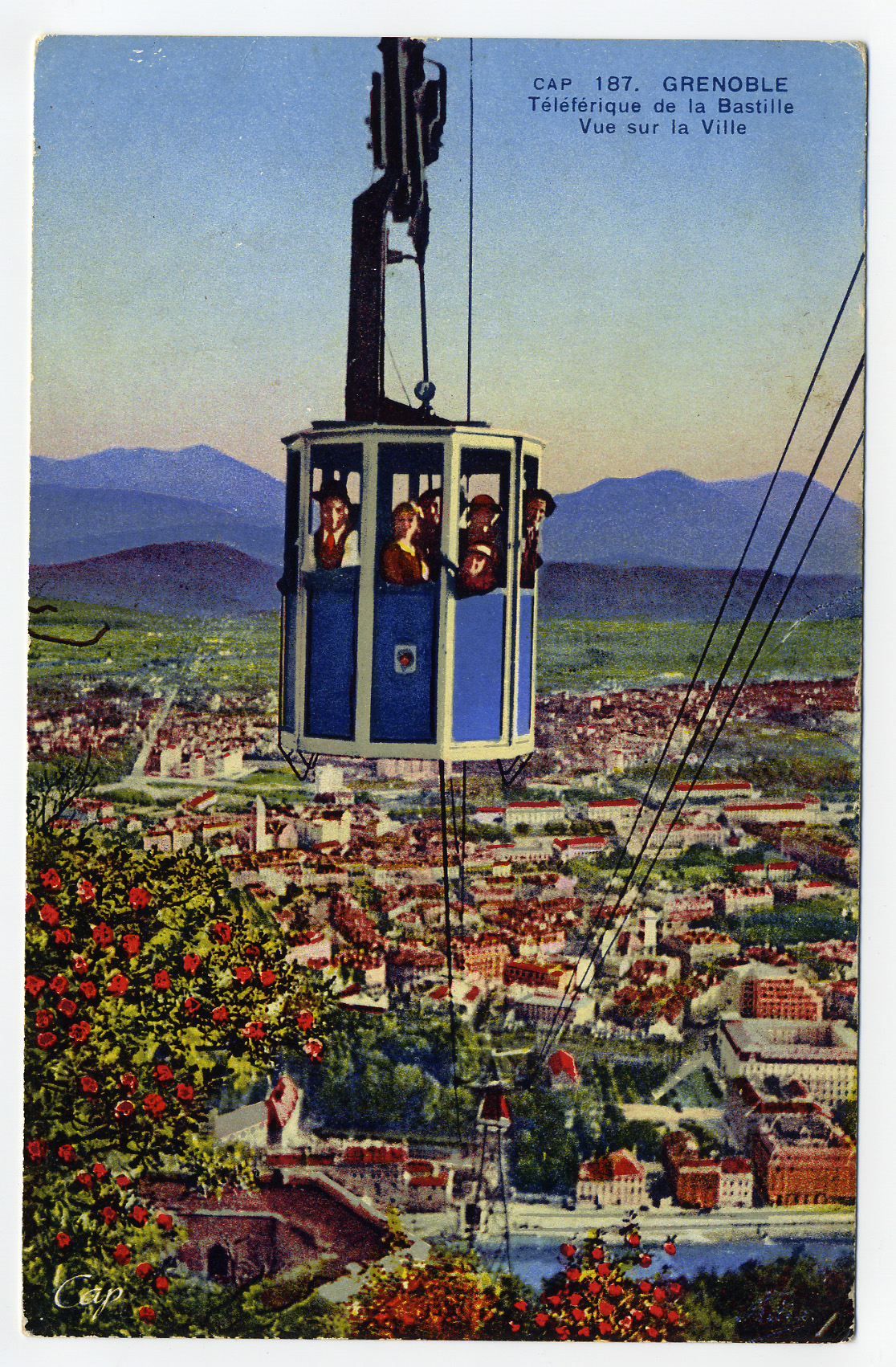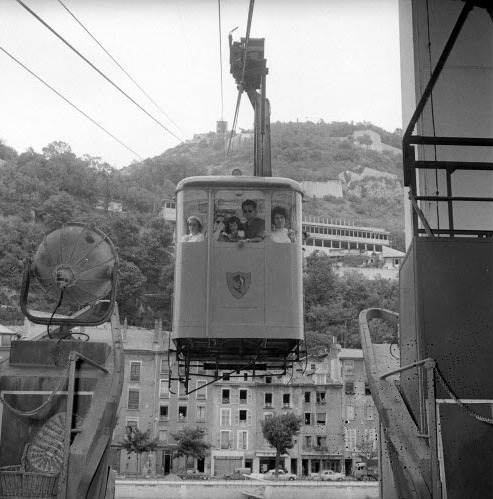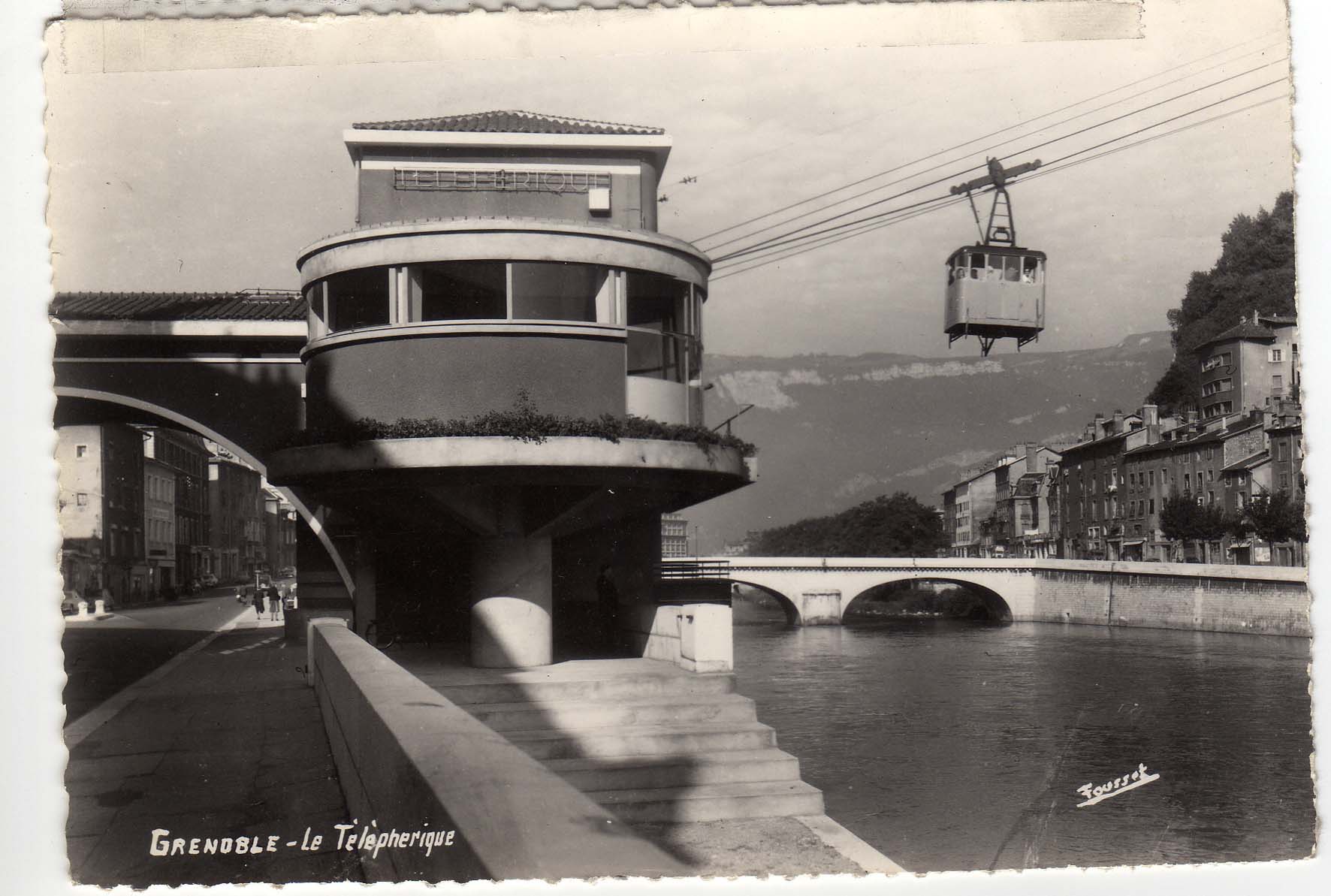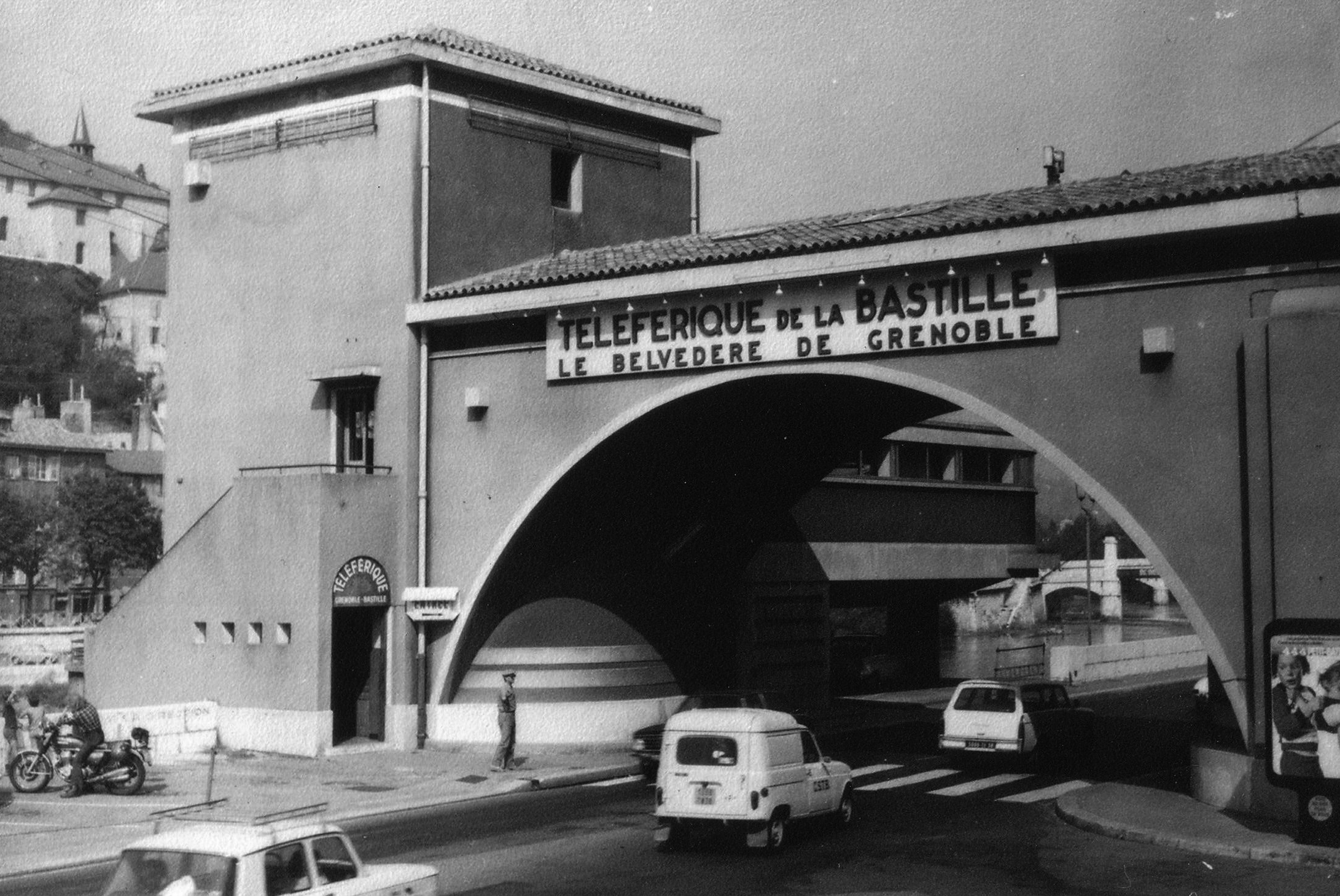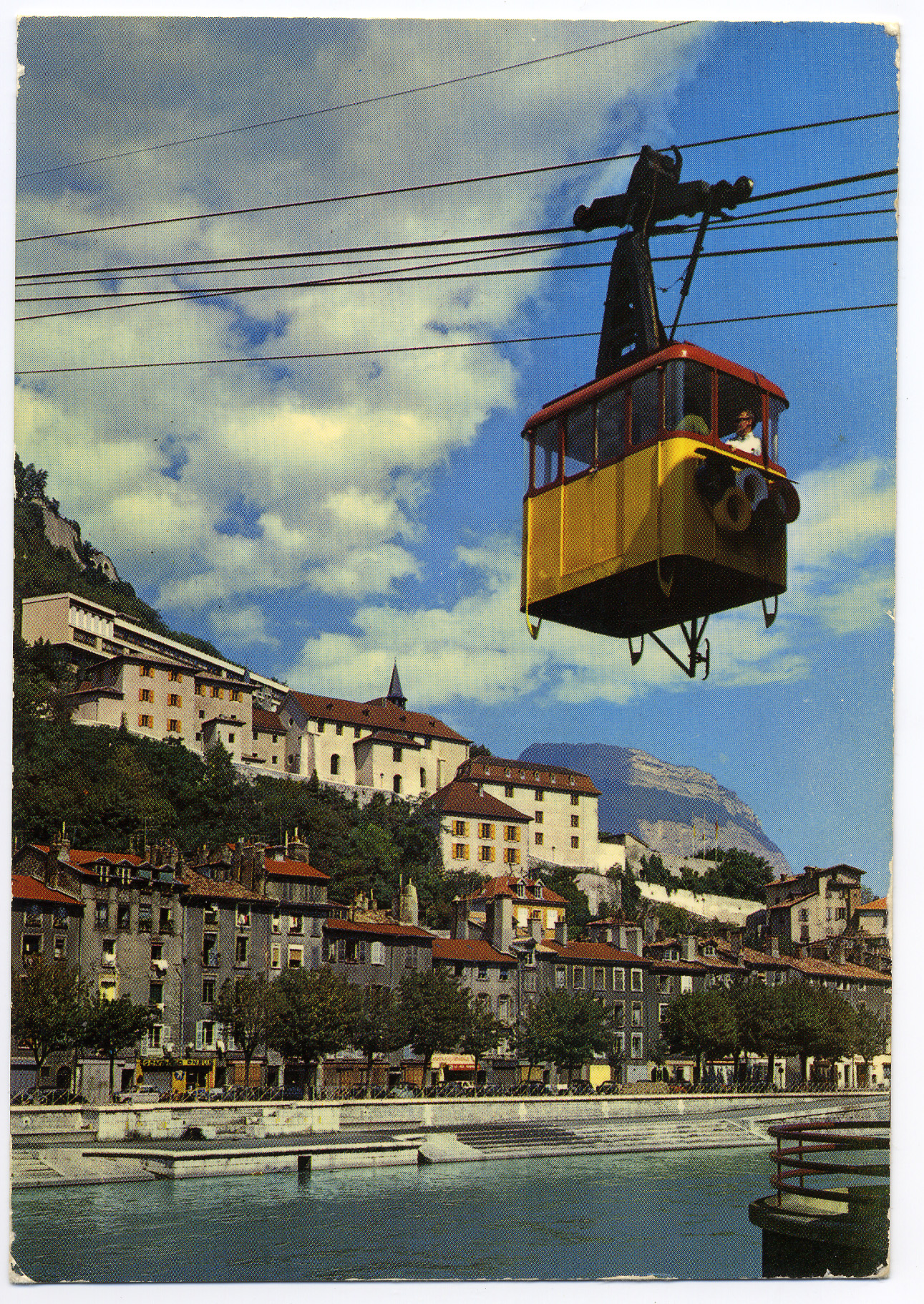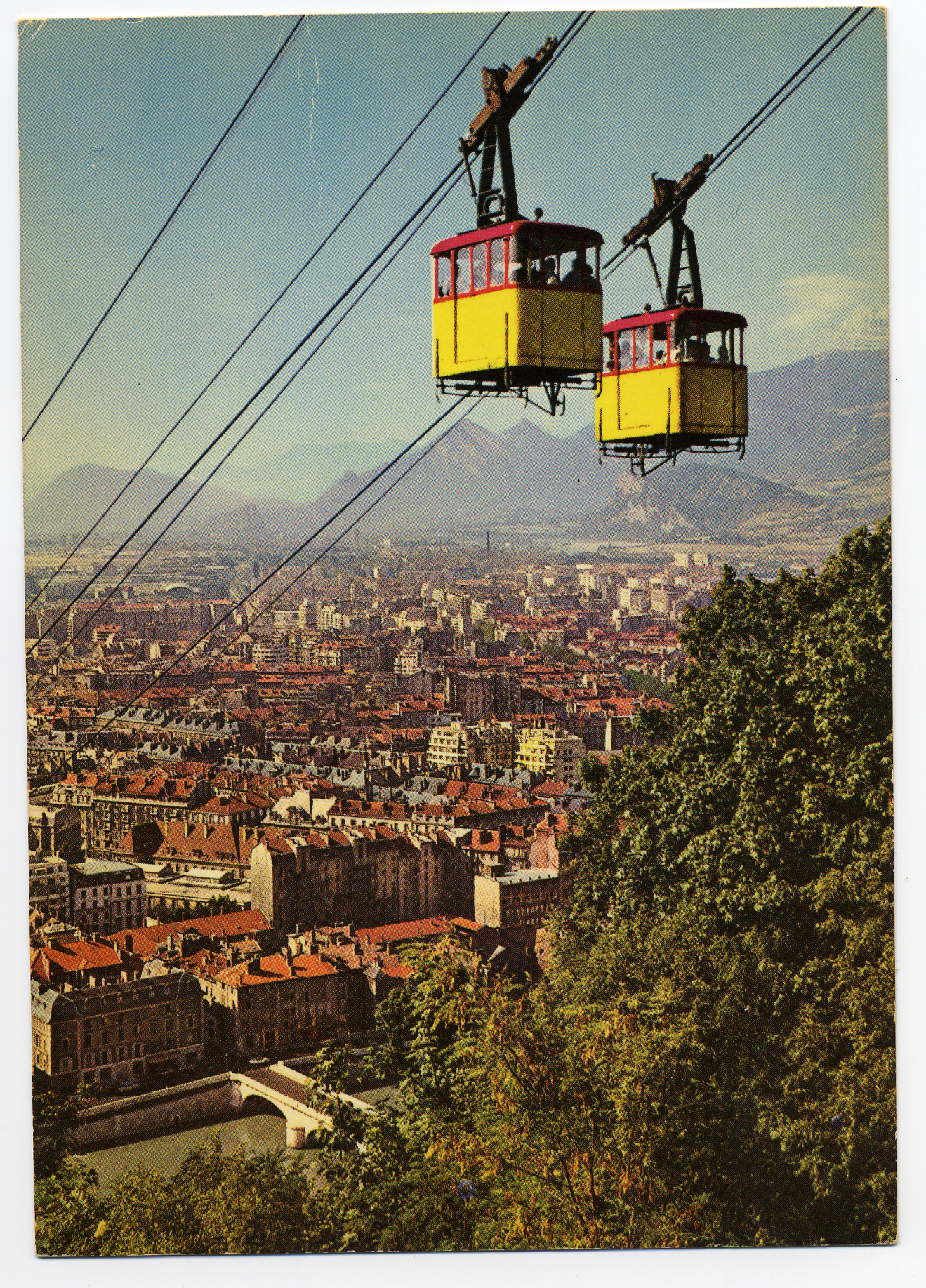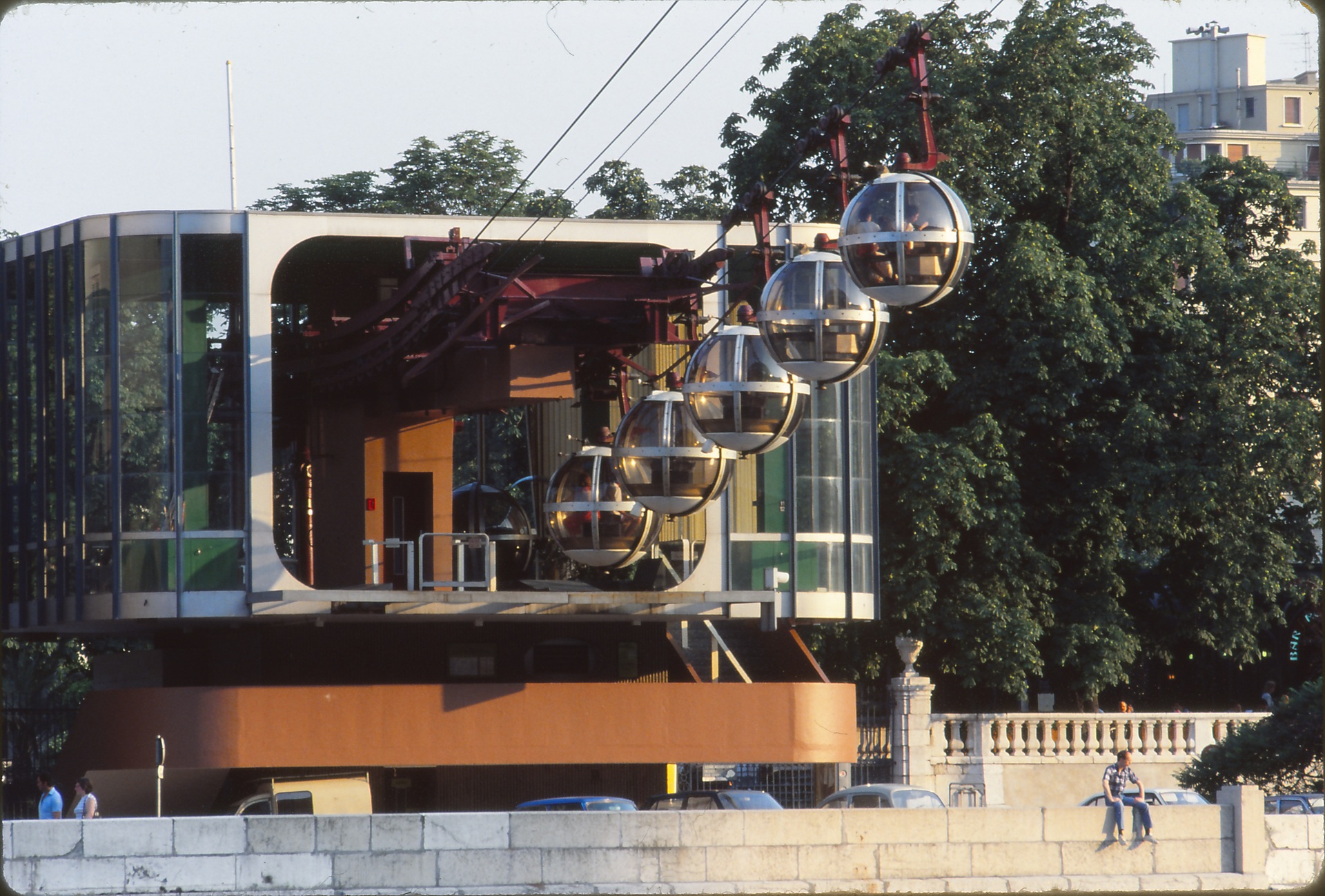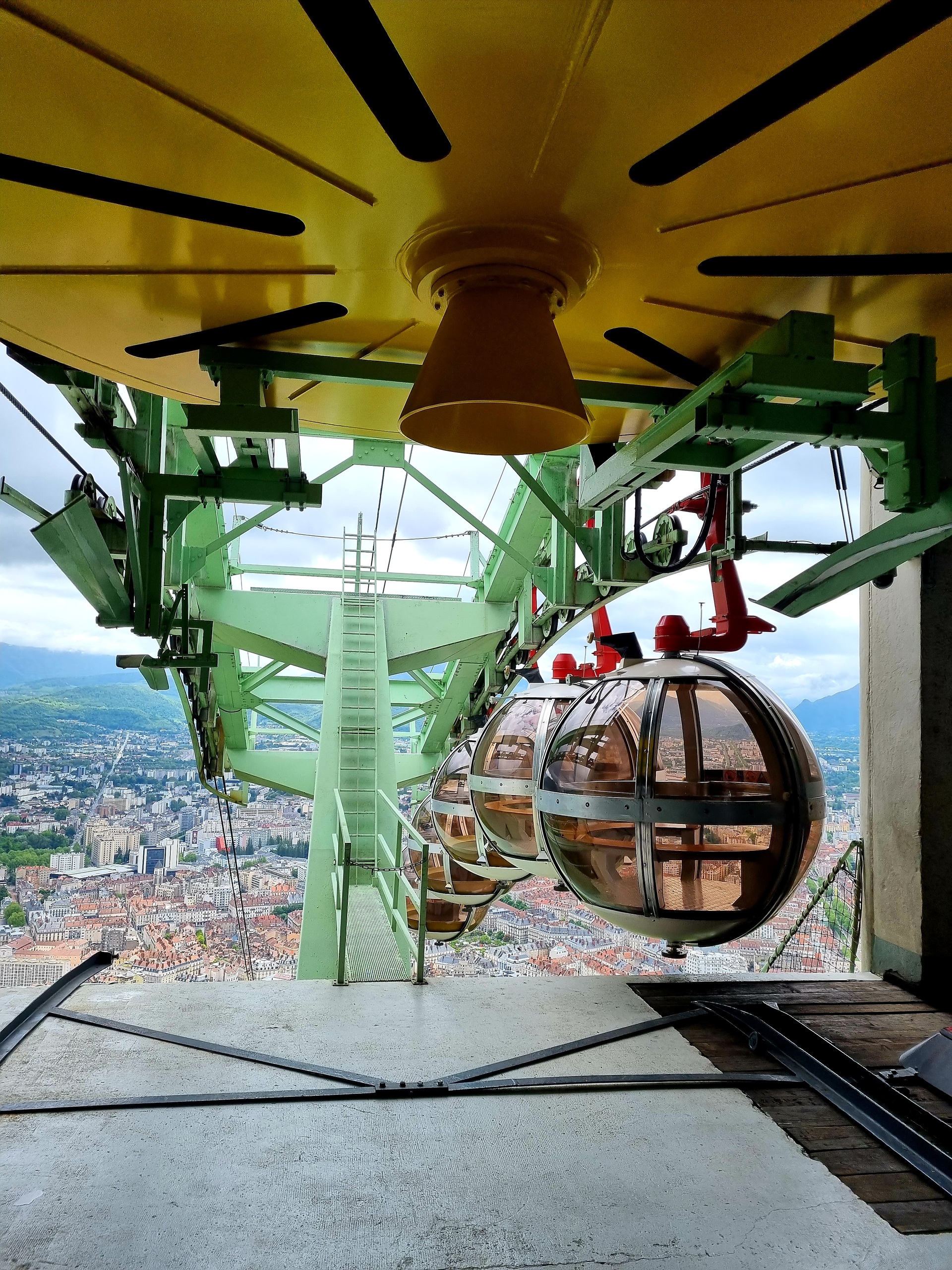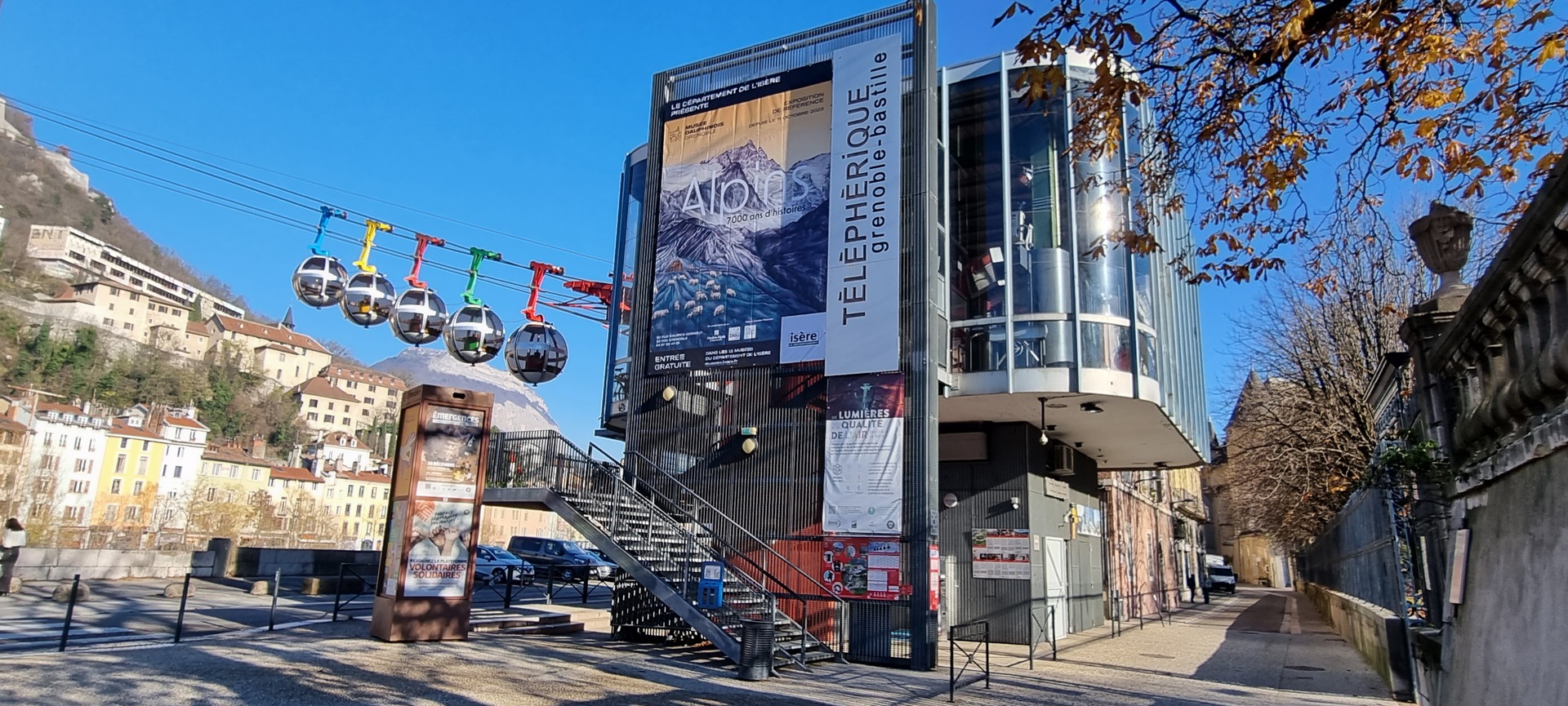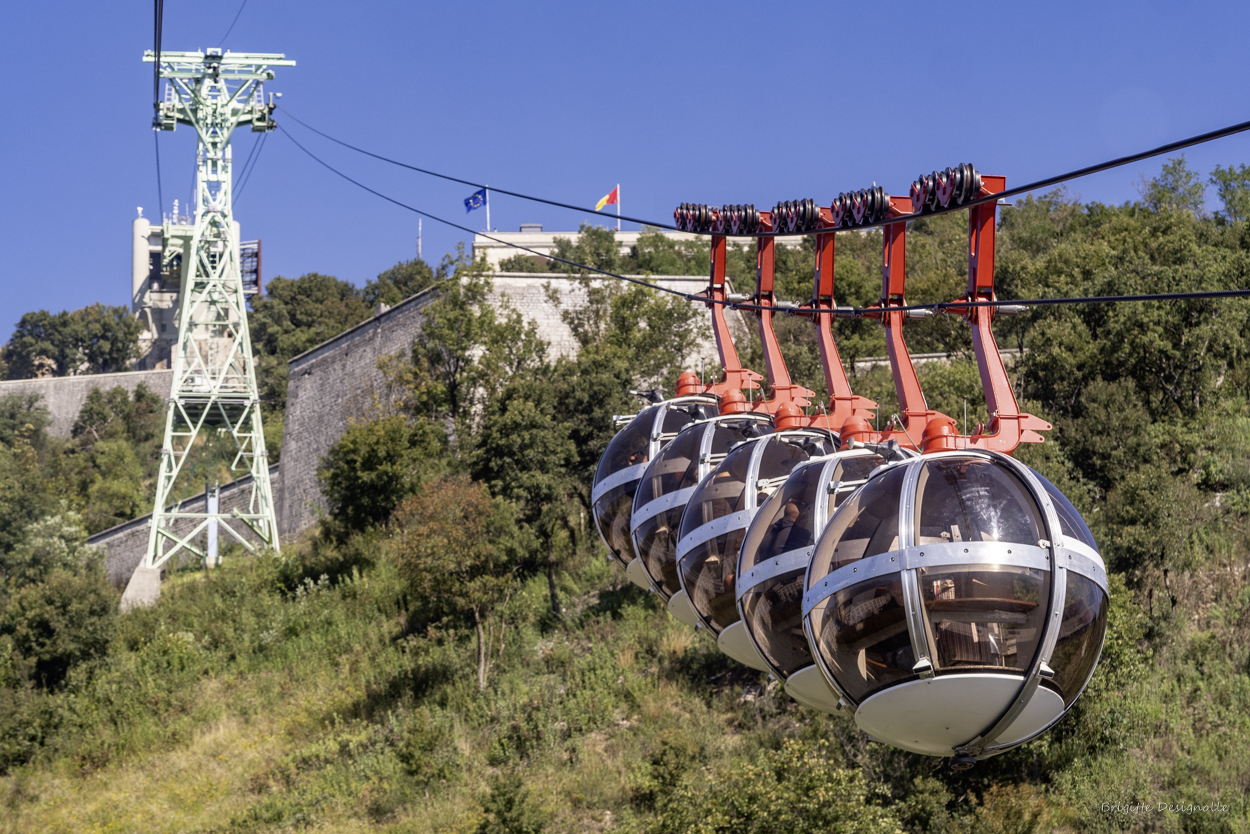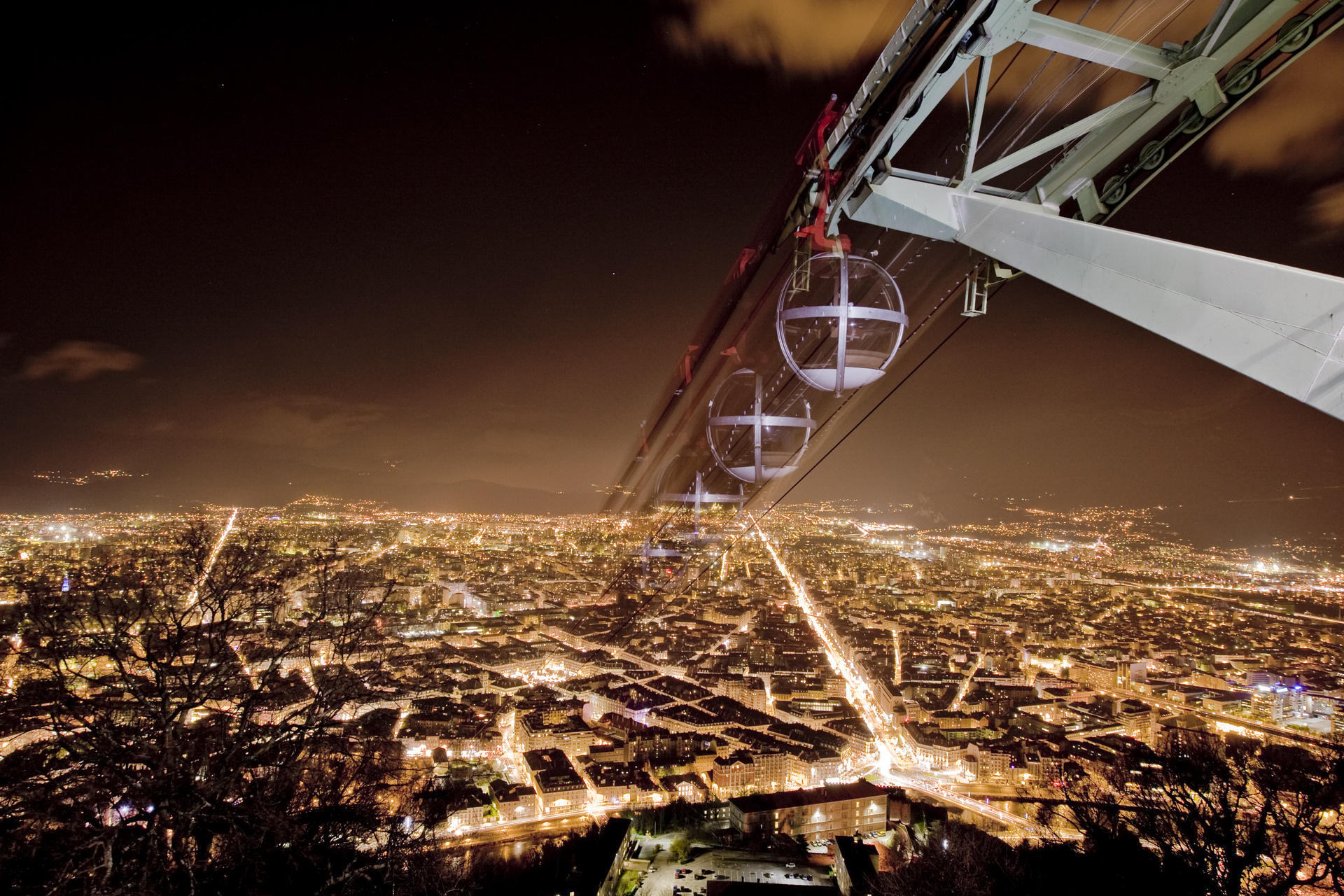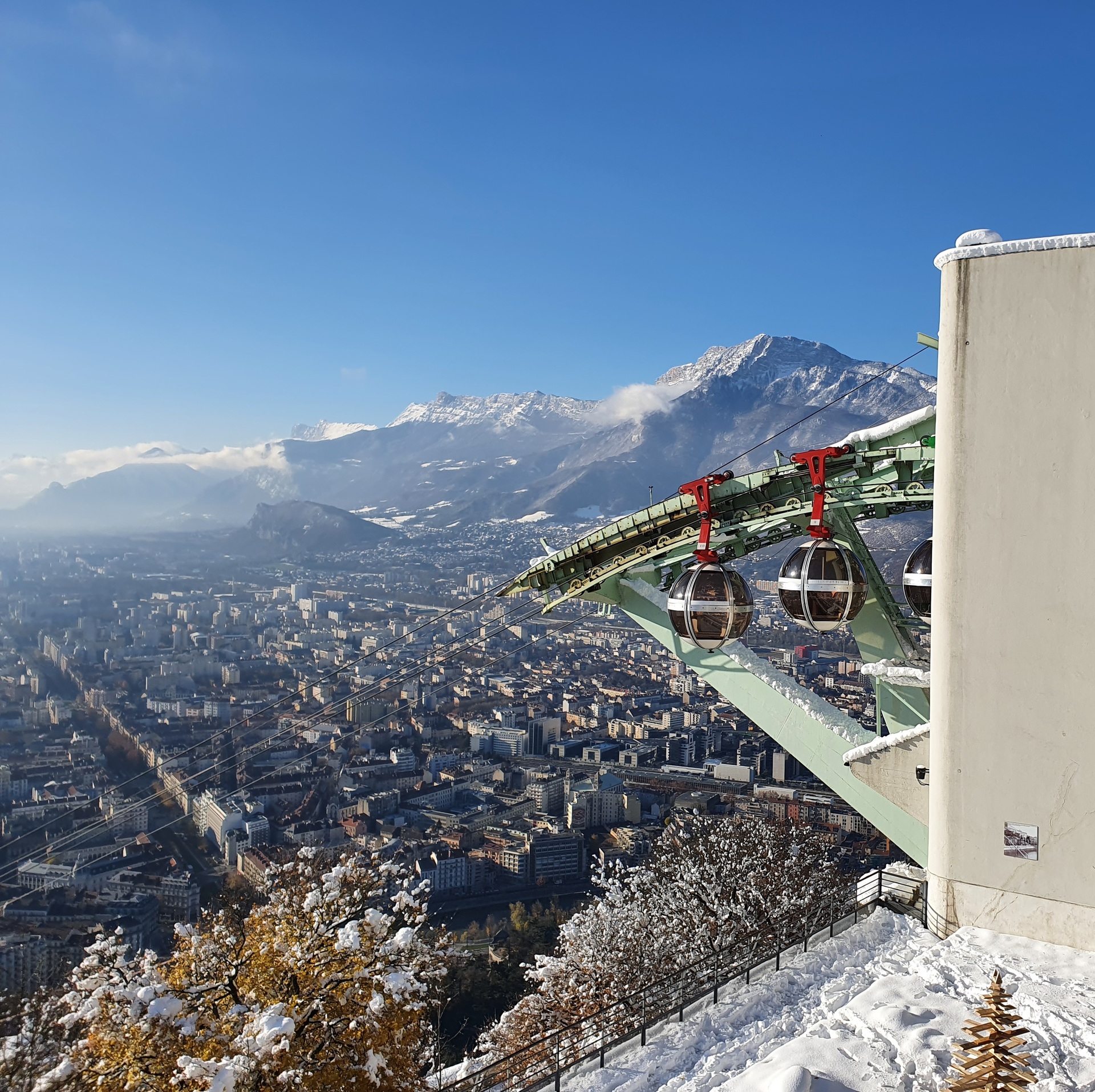
The Cable Car and its story
Discover the fascinating story of the Grenoble cable car, one of the first urban cable cars in the world, from its inauguration in 1934 to its significant developments up to the present day.

A pioneer among urban cable cars
Inaugurated on September 29, 1934, the Grenoble cable car is one of the first urban cable cars in the world, following those in Rio de Janeiro and Cape Town.
It made history by facilitating access to the Bastille while offering breathtaking views of Grenoble and the Alps.
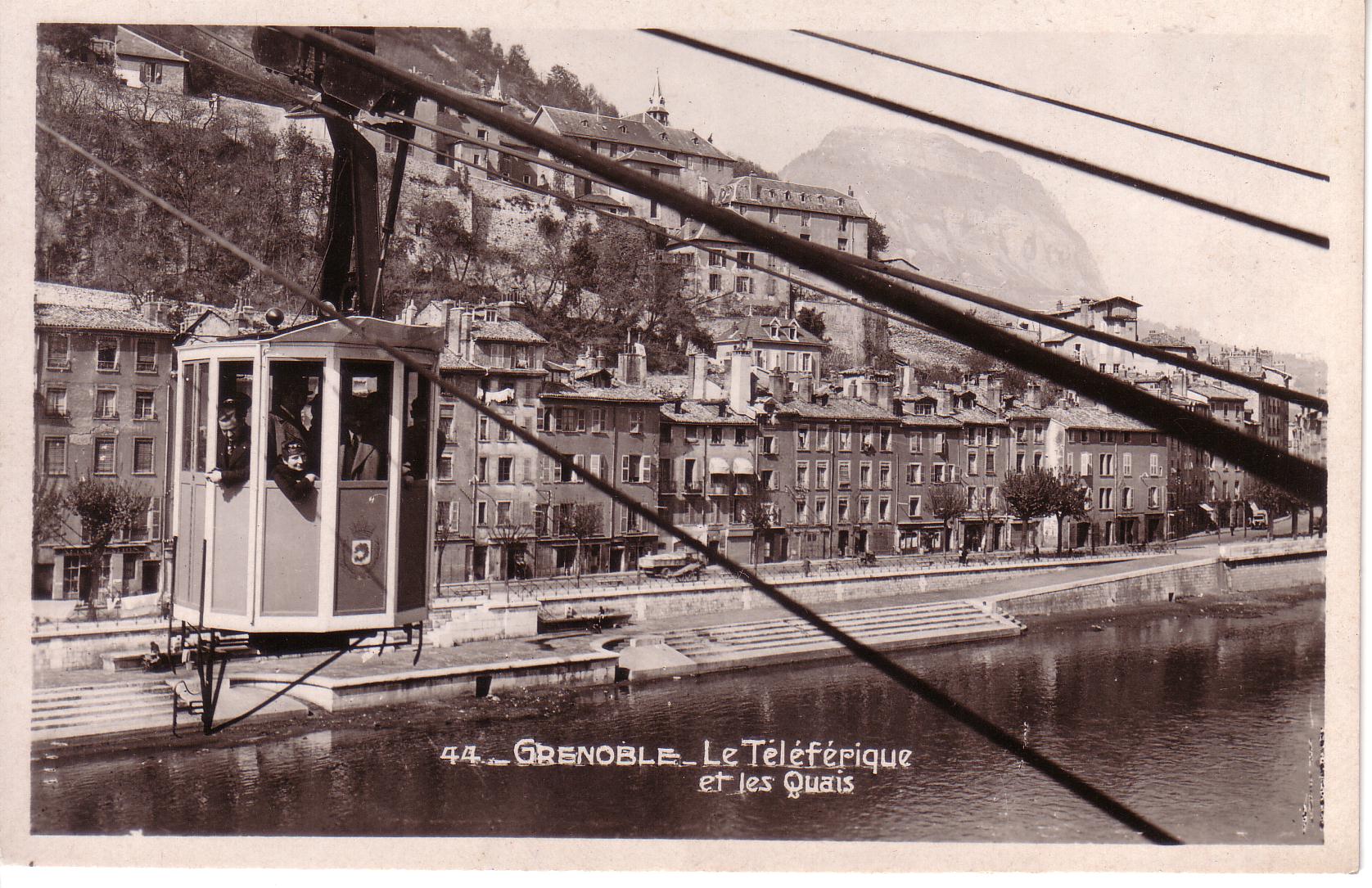

The beginning of the Cable Car in 1934
Original Technical Specifications:
- Operating system: back-and-forth, with each cabin running on its supporting cable.
- Cabins: two wooden dodecagonal cabins (12 sides).
- Capacity: 15 persons per cabin, plus an operator.

Increased capacities
1951: Arrival of metal cabins:
- More modern rectangular cabins.
- Capacity increased to 21 persons per cabin, plus the cabin operator.
1959: Redevelopment of the lower station:
- Addition of a 100-person waiting room, improving passenger reception.

The Cable Car enters the Era of Automation
1976: Inauguration of the “Second Generation” Cable Car:
- Operating system: telepulsed, with continuous unidirectional rotary motion.
- New cabins: The iconic “Bubbles”, made of plexiglass and aluminium, now a symbol of Grenoble.
- Capacity: Two trains of 4 or 5 cabins, each accommodating 6 passengers.
- Construction of a new lower station, with a modern design.
Relive the inauguration through the Dauphiné Libéré podcast.

The cable car nowadays
2005: Refurbishment of the upper station to make it accessible to the Fort de la Bastille.
2009: Renovation and modernization of the lower station.
2016: 40th anniversary of the “Bubbles” and replacement of industrial automates with next-generation equipment.
2022: One bubble is turned green to celebrate Grenoble’s title as the 2022 European Green Capital.
2024: A train of 5 cabins is decked-out with colors:
- blue and yellow : colors of Grenoble
- red and yellow : colors of the Dauphiné
- grey : symbolizing the cable car’s 90th anniversary
- green : commemorating the title of European Green Capital

90th anniversary of the Cable Car
1934-2024: A year of Celebration
The cable car celebrated its 90th anniversary in 2024! The year was marked by:
- 90 anecdotes recounting its history and secrets, shared across the press, social media, and on-site.
- Scavenger hunts, an immersive temporary exhibition, and a festive evening.
- A collection of stories shared by visitors: first rides, memorable experiences, and unforgettable moments aboard the Bubbles.
Key figures
- 375,000 annual passengers.
- More than 24 million passengers since 1934.
- 263 m of elevation (arrival altitude : 475 m).
- Average trip duration : 6 minutes.
- Operating speed : between 0 and 6 m/s.

